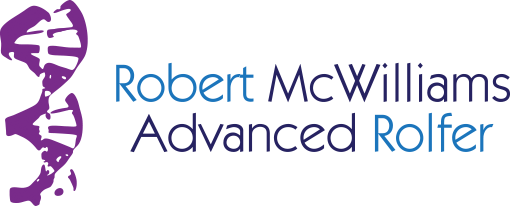“Don’t you ever rest” I was often asked. For my whole adult life, I was a professional dancer, choreographer and teacher, and I stayed busy. Sometimes I was a compulsive exerciser and stretching fanatic. It always felt like I was serving a goal of improving my dancing, maintaining a professional-calibre base fitness and performance level well into my late forties. I was always a strong proponent of deep stretching because it felt good and felt helpful to my path as a dancer. My body was my instrument. In some ways, I was an instrument: of art, expression, esthetics, and a philosophy.I like to think that I learned a lot, over the many years, about effective training; about what worked and what didn’t. One of my most effective tools was one that I learned back in the day was “Constructive Rest”, based on the work of Mabel Todd and Lulu Sweigert, later Barbara Clark, Irene Dowd, Andre Bernhard and now championed by Eric Franklin in his own technique. This work helps use mental imagery to help create better balance between agonists and antagonists. It is a kind of “active passivity” that helps you to find the appropriate “resting lengths” of your muscles. When this happens, flexors and extensors can work in better harmony, and there is a noticeable improvement in ease, and range of motion. These are two of the main goals of stretching!So, this is the main question: how much stretching is enough? Why are you stretching? How do you assess your success? What are you going for? If you want a higher front extension, dancers, test it out. Is it improved after all those splits? If not, will it really help to stretch, in the same way, a lot more? What you may need, instead, is a better balance of strengthening, coordination and differentiation within the muscles of your body that are being either over or underutilized to achieve the movement.Often times, dancers stretch for the feeling of “rightness” of the position achieved: the hip bones squared, the shoulders pulled firmly back. There is a quality of “just so”-ness. The emotional component starts to take precedence over the functionality. In order to get a higher front or side extension, it is not enough to stretch your hamstrings, adductors, quads, etc, if you can’t balance their use in the moment. You need to be able to, among other things: keep a sense of space and balance in your back (spine, psoas) and front (abdominals, chest); anchor down to the ground as you lengthen away to the clouds; deepen the insertion of the femur into the acetabulum, keep a long-muscle sense in the hip and thigh while directing the movement with your feet, into air and ground! If the powerful hip flexors of quadriceps and adductors overpower the hip extending hamstrings, it is pretty hard to have a good arabesque line.The notion of “line” in dance already implies the complex balance of flexors and extensors envisioned by somatic geniuses like Moshe Feldenkrais and Ida Rolf. I am thinking particularly of the notion of “two-way stretch” and “expansional balance” for dancers, “span” and “palintonicity” for RolfersTM. When muscles are well differentiated in the body, their distinction is clear, and they are not “adhered”, “lumpy” or “stuck together”, this phenomenon of “line” as we know it in dance starts to happen on its own. When we learn to use our spatial awareness and use of weight to help us properly and effortlessly coordinate all movement, this newly acquired “line” can be anchored in our bodies, more dependable in function than any brute conditioning program. Combining an awareness of line, two-way stretching-the ability to lengthen in both directions in any action- with physical strengthening exercises is most effective, then, in my view.I m a huge fan of Robert Cooley’s program, as set forth in “The Genius of Flexibility” (Cooley, R., Fireside, New York, 2005) for achieving functional gains through resistance stretching. It will not improve your coordinative skills, however. In addition to a good, observant dance teacher, I recommend “Dynamic Alignment Through Imagery” (Franklin, E., Human Kinetics, my copy is from 1996.) Allow your aesthetic sense to guide you further. A side extension that depends on a distortion of your hip line to get the leg up is not beautiful, and should be avoided. It is also dysfunctional structurally-it will impact your joints down the line!Sometimes your body is trying to tell you that you don’t need more stretch, but strength, in an area. I am thinking of a dancer client, fairly new to the Rolfing® work still, who has had chronic tendinitis in her ankles and Achilles her whole life. To me, this speaks not just of a lack of fluidity in the backs of her calves, but a failure of the main support structures higher up-thighs, hips, psoas, spine-to take more of the work out of the overworked tendons below. No amount of stretching the backs of her calves will remedy that, as long as she keeps doing fundamentally unsupported relèvés and turns.So, perhaps a more sophisticated stretching program could have the goals of:• Line: as discussed, a two-way reaching in the limbs, pelvis and spine that enables us to gain support from the space around us.• Differentiation: the ability to separate out flexors from extensors in function; taking the “brakes off”. Rolfing® is great for this!• Strength/Stretch combined, as in Cooley’s work; resistance training (weights, jumps, relèvés, etc) that doesn’t overpower the kinesthetic sense of weight. Our sense of weight is a fundamental element in all coordinative tasks, as is the spatial sense. We always stretch best when we have an anchor in the floor somewhere, too-not “ground” into the floor, but “yielding”, opening gracefully to accept support.

hank you for the helpful tips! I would not have gotten this on my own! Is it alright to reference things about this on my website easily incorporate a backlink to the webpage?